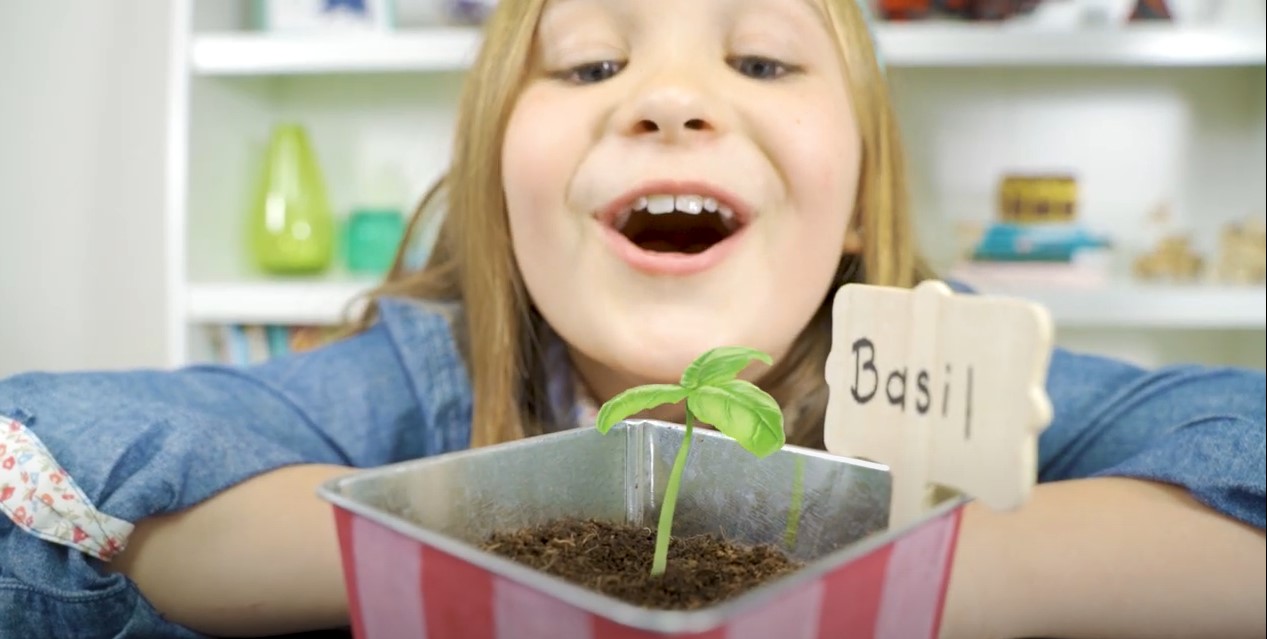Can a simple kit truly spark a child’s passion for gardening and nature? The NATIONAL GEOGRAPHIC Herb Growing Kit for Kids does exactly that, offering a perfect blend of creativity, education, and hands-on fun that captivates young minds and green thumbs alike.
This comprehensive herb growing kit provides everything a budding botanist needs to start their very own herb garden. It includes seeds for three popular culinary herbs: basil, oregano, and chives.
The inclusion of peat pellets simplifies the planting process, making it easy for young gardeners to get started without the mess of loose soil.
Before I start my review, please note that this article contains affiliate links. As an Amazon Associate, I earn from qualifying purchases, which helps support my work. Now, let’s take a closer look at the NATIONAL GEOGRAPHIC Herb Growing Kit for Kids.
One of the standout features of this kit is it’s focus on education. The included Learning Guide goes beyond simple planting instructions, offering a wealth of botanical facts presented in a kid-friendly manner.
This guide changes the growing process into a scientific adventure, encouraging children to observe, record, and understand the life cycle of their plants.
The kit’s contents are thoughtfully curated to provide a finish experience:
| Item | Quantity | Purpose |
|---|---|---|
| Stainless Steel Pots | 3 | Planting containers |
| Seed Packets | 3 (Basil, Oregano, Chives) | Plants to grow |
| Peat Pellets | 3 | Growing medium |
| Wooden Labels | 3 | Plant identification |
| Garden Shovel | 1 | Planting tool |
| Paint Palette | 1 | Mixing paints |
| Paints | 6 colors | Pot decoration |
| Paint Brushes | 2 | Applying paint |
| Sticker Sheet | 1 (30 stickers) | Additional decoration |
| Learning Guide | 1 | Instructions and education |
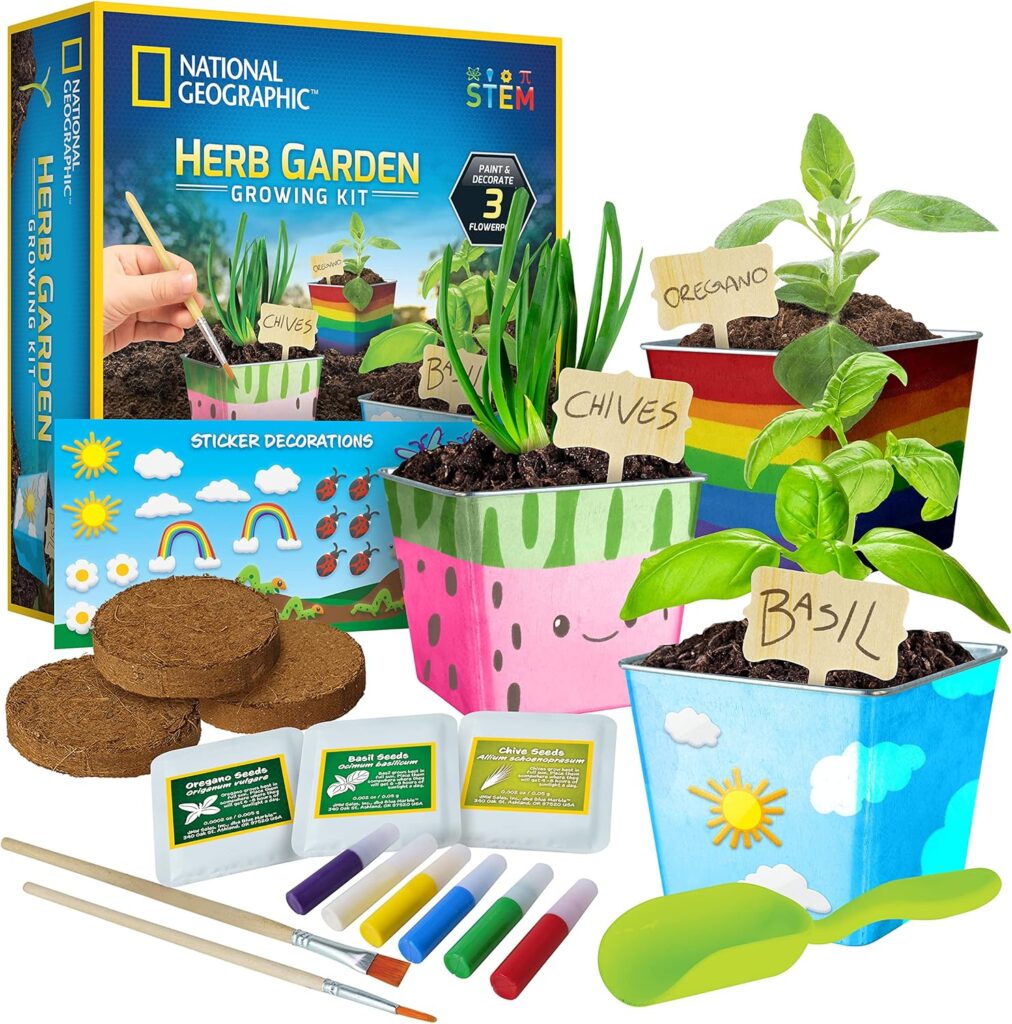
The quality of the materials is noteworthy. The stainless steel pots are durable and resist rusting, ensuring they can withstand the enthusiasm of young gardeners.
The paints and stickers are vibrant, adding a cheerful touch to the growing space.
The wooden plant labels and garden shovel add an authentic feel to the gardening experience.
Parents and grandparents consistently praise this kit as an excellent gift option. It’s appeal spans a wide age range, with reviewers mentioning successful use by children as young as three and as old as seven.
The kit strikes a balance between being simple enough for younger children to enjoy with some assistance and engaging enough to hold the interest of older kids who can manage it independently.
The educational value of this kit extends beyond botany. It teaches responsibility as children care for their plants daily, patience as they wait for seeds to sprout, and pride in nurturing something from seed to harvest.
These life lessons are seamlessly integrated into an activity that feels more like play than learning.
However, no product is without it’s minor drawbacks. A few reviewers noted that their seeds didn’t sprout, which could be because of various factors such as overwatering, underwatering, or temperature conditions.
This presents an opportunity for a valuable lesson in persistence and troubleshooting, but it’s worth noting that National Geographic’s customer service has been responsive in addressing such issues.
Some users mentioned that the pots lack drainage holes, which can lead to overwatering problems. A simple solution is to carefully drill small holes in the bottom of the pots or to be extra vigilant about watering amounts. This minor inconvenience is outweighed by the pots’ durability and decorative potential.
The NATIONAL GEOGRAPHIC brand brings credibility to this kit, known for it’s commitment to education and exploration. This reputation is reflected in the thoughtful design and educational content included with the product.
It’s clear that the kit aims not just to entertain, but to inspire a genuine interest in the natural world.
For parents looking to limit screen time and encourage outdoor interests, this herb growing kit offers an engaging alternative. It combines tactile activities, creative expression, and natural science in a way that can captivate children’s attention and imagination.
In what happens when children are increasingly disconnected from nature, the NATIONAL GEOGRAPHIC Herb Growing Kit for Kids serves as a bridge, bringing a bit of the outdoors inside and fostering a connection to the earth and it’s processes. It’s more than just a toy or a craft project – it’s a gateway to understanding the environment, food production, and the joy of nurturing living things. Click here to view the kit.
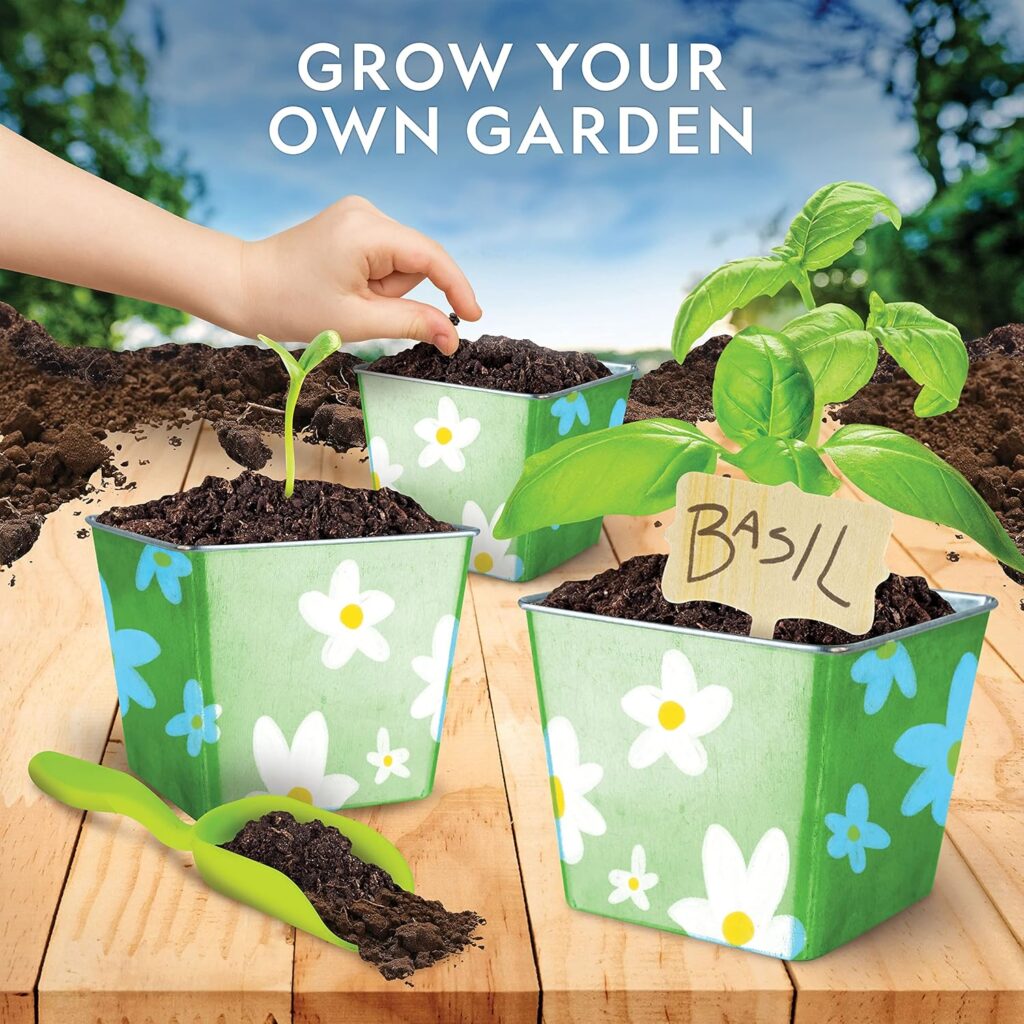
The Importance of Gardening for Children’s Development
How can a simple act of planting seeds impact a child’s growth and learning? Gardening offers a multitude of benefits for children, fostering physical, cognitive, and emotional development in ways that few other activities can match.
Physical Development
Gardening is a hands-on activity that engages children’s bodies in various ways. As they dig, plant, water, and tend to their gardens, children develop fine motor skills and hand-eye coordination.
The physical nature of gardening also provides a natural form of exercise, encouraging outdoor activity and promoting overall health.
Cognitive Growth
The garden is a living laboratory where children can observe, experiment, and learn about the natural world. Through gardening, children gain practical knowledge about plant life cycles, weather patterns, and ecosystems.
This hands-on learning often proves more effective than traditional classroom instruction, as it allows children to see scientific concepts in action.
Math and Science Skills
Gardening naturally incorporates mathematical concepts such as measurement, counting, and spatial awareness. Children learn to measure soil depth, count seeds, and understand the spacing requirements between plants.
They also gain firsthand experience with scientific processes like photosynthesis, decomposition, and the water cycle.
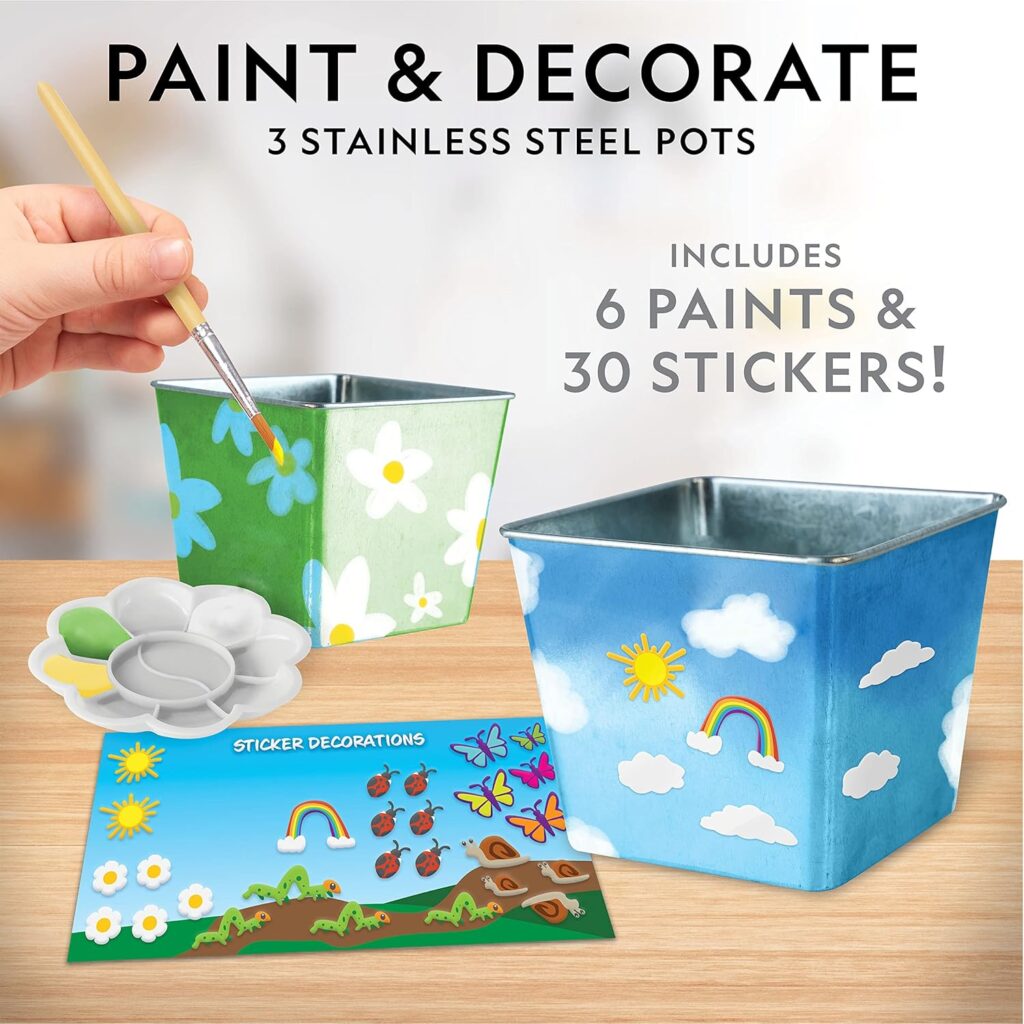
Problem-Solving Abilities
Gardens present ongoing challenges that need creative solutions. Whether it’s dealing with pests, adjusting to weather conditions, or figuring out why a plant isn’t thriving, children learn to analyze problems and develop strategies to overcome them.
Emotional and Social Development
Gardening can have a profound impact on a child’s emotional well-being and social skills. The act of nurturing plants fosters a sense of responsibility and accomplishment.
As children see the results of their care and effort, they develop self-confidence and a sense of pride in their abilities.
Patience and Perseverance
When faced with instant gratification, gardening teaches children the value of patience. The process of waiting for seeds to sprout and plants to grow helps children understand that some of the most rewarding experiences in life need time and persistence.
Stress Reduction
Spending time in nature, even in a small garden, has been shown to reduce stress and anxiety in both children and adults. The sensory experience of touching soil, smelling flowers, and observing plant growth can have a calming effect on young minds.
Environmental Awareness
Gardening instills in children a deep appreciation for the natural world. As they learn about the interdependence of plants, insects, and other organisms, children develop an understanding of ecosystems and the importance of environmental stewardship.
Sustainable Practices
Through gardening, children can learn about sustainable practices such as composting, water conservation, and organic growing methods. These early lessons in environmental responsibility can shape lifelong habits and attitudes towards conservation.
Nutritional Education
For many children, growing their own fruits, vegetables, or herbs can transform their relationship with food. Children who participate in gardening are more likely to try and enjoy eating fresh produce, leading to healthier eating habits.
Understanding Food Sources
In an era where many children are disconnected from the sources of their food, gardening provides a direct link to food production. This understanding can foster a greater appreciation for farmers and the effort involved in growing food.
Creative Expression
Gardens offer a canvas for creativity. Children can express themselves through the design of their garden, the selection of plants, and even in crafting decorations for their growing space.
This creative outlet can boost self-expression and artistic development.
Family Bonding
Gardening can be a wonderful family activity, providing opportunities for shared experiences and quality time together. It creates a space for conversation, cooperation, and the passing down of knowledge between generations.
Life Skills
The skills learned through gardening extend far beyond the garden itself. Children develop planning abilities, learn to follow instructions, and gain an understanding of cause and effect.
These skills are transferable to many areas of life and can contribute to future success in school and beyond.
Cultural Awareness
Gardens can be a gateway to learning about different cultures through the exploration of plants from around the world. Children can find out about the origins of various plants and their significance in different societies, broadening their cultural understanding.
Given these numerous benefits, it’s clear that gardening is more than just a hobby—it’s a valuable educational tool that can significantly contribute to a child’s overall development.
By starting with a simple herb garden, children can experience the joys and challenges of plant care in a manageable format. As their interest grows, so too can their gardening projects, potentially leading to larger gardens, community involvement, or even career interests in botany, agriculture, or environmental science.
The act of gardening offers children a unique blend of physical activity, intellectual stimulation, emotional growth, and practical life skills.
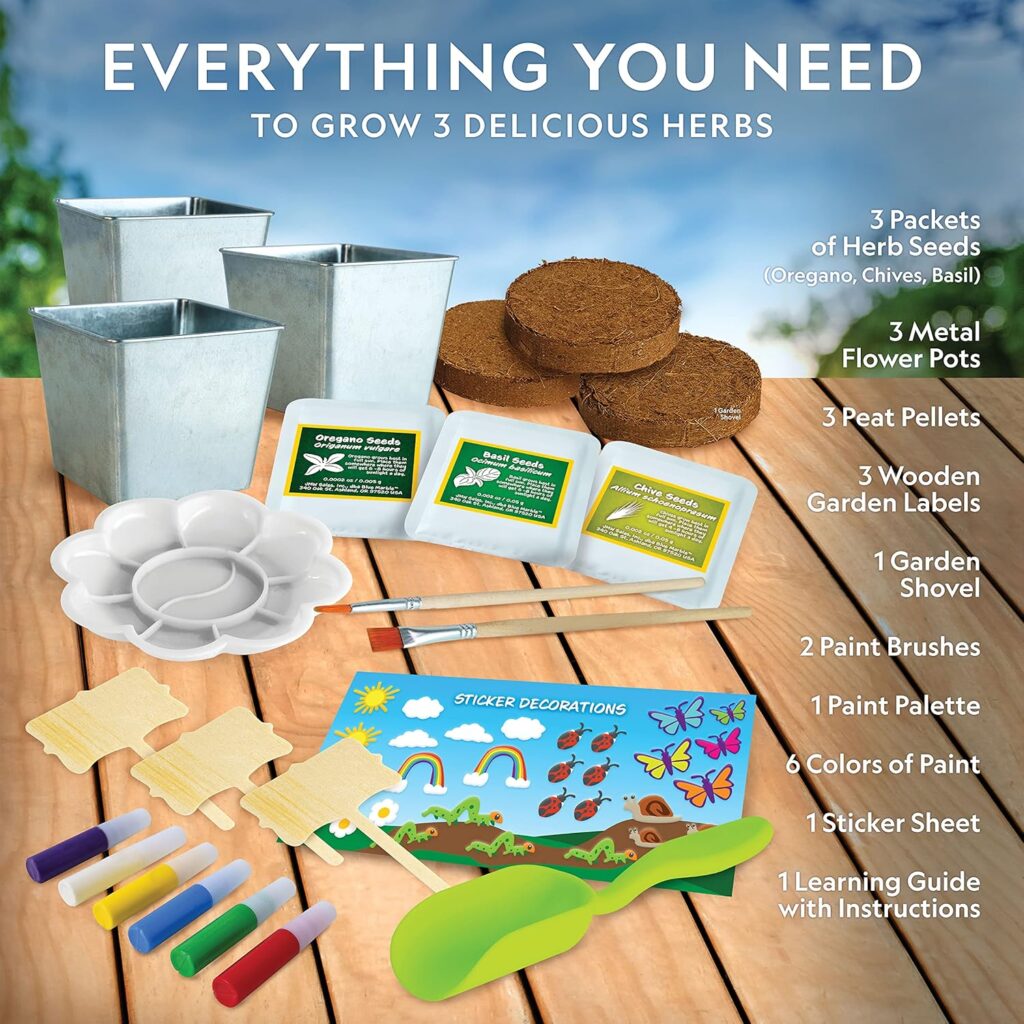
My Thoughts on the NATIONAL GEOGRAPHIC Herb Growing Kit for Kids
Of all the educational toys I’ve encountered over the years, the NATIONAL GEOGRAPHIC Herb Growing Kit for Kids truly stands out as a gem that combines learning with hands-on fun. As a parent and avid gardener, I was initially skeptical about how well a kit could capture the essence of gardening for children.
However, after using this kit with my own kids, I’ve been pleasantly surprised by it’s thoughtful design and educational value.
A Closer Look at the Kit
The kit’s contents are impressively comprehensive. The three stainless steel pots are sturdy and perfect for little hands to decorate.
My children spent a delightful afternoon painting and adorning their pots with the included paints, brushes, and stickers.
This personalization aspect immediately created a sense of ownership and excitement about the growing process.
What sets this kit apart is it’s focus on education. The Learning Guide is information, presenting botanical facts in a way that captivated my children’s curiosity.
It transformed our planting sessions into mini-science lessons, with my kids eagerly absorbing knowledge about plant life cycles and growth requirements.
The Growing Experience
Planting the seeds was a breeze, thanks to the peat pellets that expand when watered. This mess-free approach was a relief, especially for indoor gardening. We planted basil, oregano, and chives, and the anticipation of seeing the first sprouts was palpable in our household.
The wooden plant labels and miniature garden shovel added an authentic touch to the experience. My children took their roles as gardeners seriously, diligently checking their pots each day and carefully watering their seeds.
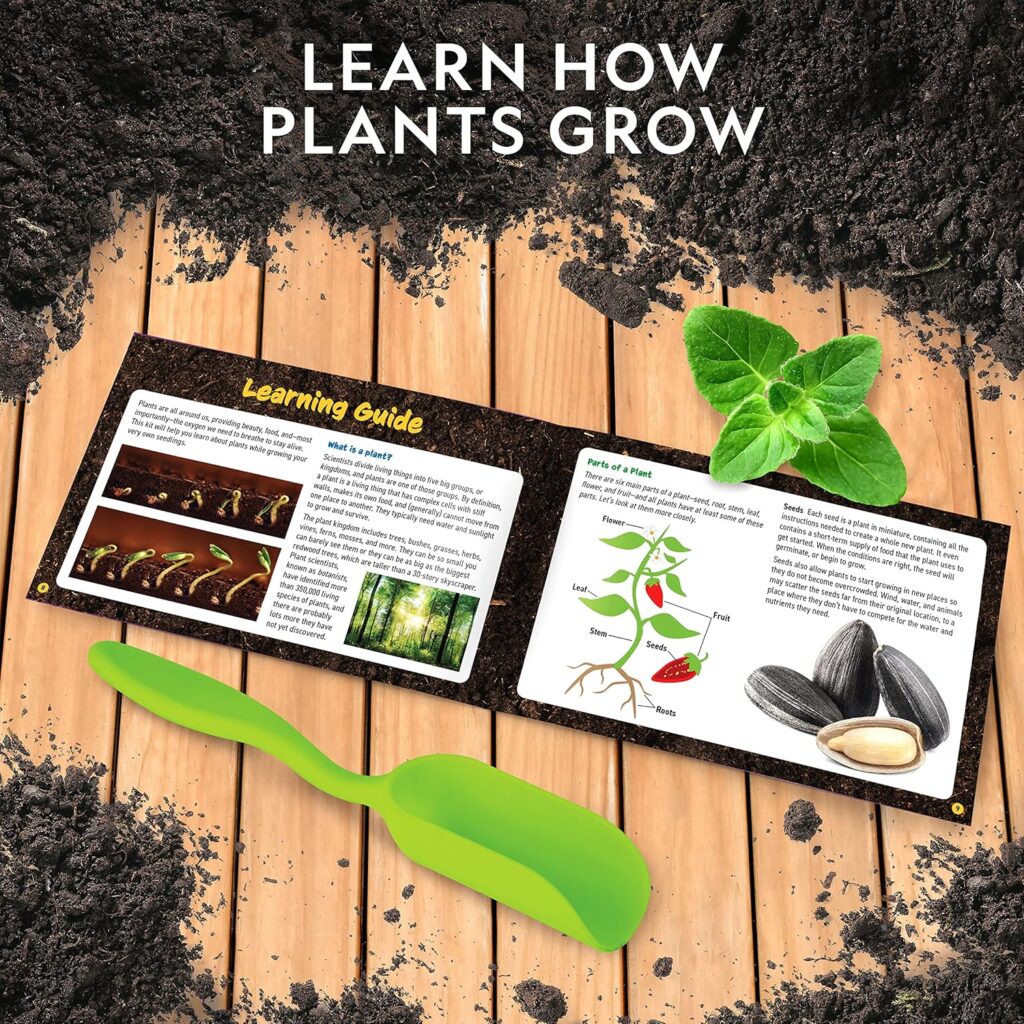
Learning Beyond Botany
What impressed me most was how this kit fostered skills beyond just gardening. My children learned patience as they waited for seeds to sprout, responsibility in caring for their plants daily, and problem-solving when faced with challenges like overwatering or slow growth.
The kit also sparked conversations about nutrition and where our food comes from. My kids became more interested in trying herbs in our meals, knowing they had grown them themselves.
People Also Asked
What age group is the NATIONAL GEOGRAPHIC Herb Growing Kit for Kids suitable for?
The kit is ideal for children aged 4-10, but younger kids can enjoy it with parental assistance, while older children might appreciate the more scientific aspects.
How long does it take for the herbs to grow?
Germination typically occurs within 7-14 days, with full growth taking 4-6 weeks, depending on care and conditions.
Are refill seeds available for the kit?
While the kit doesn’t come with refills, standard herb seeds can be used once the original plants have been harvested.
Is the kit suitable for indoor use?
Yes, the kit is designed for indoor use, making it perfect for year-round gardening regardless of outdoor space or climate.
Overcoming Challenges
We did face a few hurdles along the way. One of our basil seeds didn’t sprout initially, which led to a valuable lesson in perseverance.
We replanted and eventually succeeded, much to my daughter’s delight.
Educational Value
As an educator, I appreciate how this kit aligns with STEM learning principles. It provides hands-on experience with scientific concepts, encourages observation and data recording, and introduces basic principles of biology and environmental science.
The kit also offers opportunities for cross-curricular learning. We used the growing process to practice math skills, measuring growth and calculating water amounts.
It even inspired creative writing projects, with my son keeping a “plant diary” to document the herbs’ progress.
Fostering Environmental Awareness
One of the most valuable aspects of this kit is how it nurtures a connection with nature. In our increasingly digital world, it’s crucial to provide children with tangible experiences of growth and natural processes.
This kit does exactly that, fostering an appreciation for the environment and the effort required to grow food.
My children have become more aware of plants in our neighborhood and show a greater interest in our family’s gardening projects. It’s heartening to see how a simple herb kit has sparked a broader curiosity about the natural world.
Culinary Adventures
As our herbs matured, they became a source of pride and excitement in the kitchen. My children eagerly volunteered to add fresh basil to our pizzas and chives to our omelets.
This hands-on connection to food preparation has been an unexpected bonus, encouraging healthier eating habits and an interest in cooking.
Long-Term Impact
Months after our initial planting, the impact of this kit continues to resonate. My children have maintained their interest in gardening, expanding to other plants and even starting a small vegetable patch in our backyard.
The skills and knowledge gained from this simple herb kit have laid a foundation for ongoing learning and appreciation of nature.
My Recommendation
While no product is perfect, the NATIONAL GEOGRAPHIC Herb Growing Kit for Kids offers a well-rounded introduction to gardening that goes beyond mere entertainment. It’s an investment in education, creativity, and environmental awareness.
For parents looking to engage their children in a meaningful, screen-free activity that offers long-term benefits, this kit is a solid choice.
The combination of hands-on activities, scientific learning, and the joy of growing something from seed to harvest makes this kit stand out.
That being said, I highly recommend the NATIONAL GEOGRAPHIC Herb Growing Kit for Kids.
Give your child the gift of learning, creativity, and the joy of growing—order the NATIONAL GEOGRAPHIC Herb Growing Kit for Kids and watch them explore the wonders of nature firsthand!
